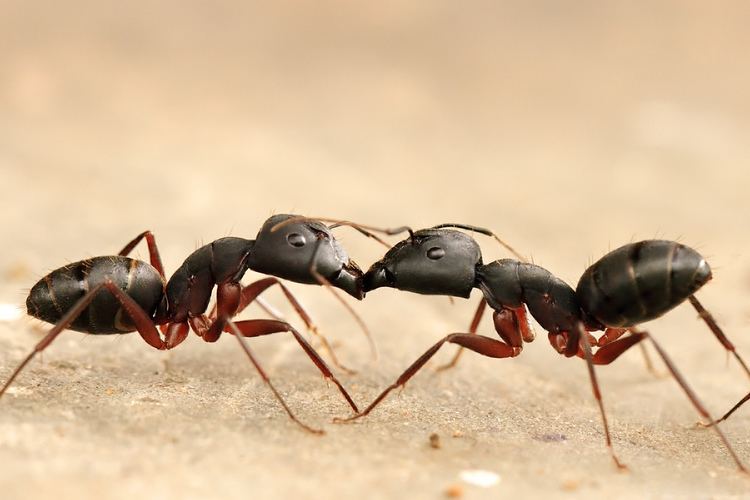 | ||
Trophallaxis /ˌtroʊfəlˈæksɪs/ is the transfer of food or other fluids among members of a community through mouth-to-mouth (stomodeal) or anus-to-mouth (proctodeal) feeding. It is most highly developed in social insects such as ants, termites, wasps and bees. The word was introduced by the entomologist William Morton Wheeler in 1918. The behaviour was used in the past to support theories on the origin of sociality in insects. The Swiss psychologist and entomologist Auguste Forel also believed that food sharing was key to ant society and he used an illustration of it as the frontispiece for his book The Social World of the Ants Compared with that of Man.
In ants such as the red imported fire ant (Solenopsis invicta) individual colony members store food in their crops and regularly exchange it with other colony members and larvae to form a sort of "communal stomach" for the colony. This is also true for certain species of Lasioglossum, such as the sweat bee Lasioglossum hemichalceum. L. hemichalceum will often exchange food with other members regardless of whether or not they are nestmates or not. In termites and cockroaches, proctodeal trophallaxis is crucial for replacing the gut endosymbionts that are lost after every molt. This should not be confused with coprophagia.
Many wasps, like Protopolybia exigua and Belonogaster petiolata, exhibit foraging behavior where adults perform trophallaxis with adults and between adults and larvae. This is also true for some bees such as Xylocopa pubescens. In X. pubescens, trophallaxis has led to the guarding behavior that the species is known for.
In addition, Vespula austriaca wasps also engage in trophallaxis with its host workers to obtain nutrients.
Vertebrates such as some bird species, gray wolves, and vampire bats also feed their young through trophallaxis.
Trophallaxis serves as a means of communication, at least in bees, like M. genalis, and ants. In some species of ants, it may play a role in spreading the colony odour that identifies members.
